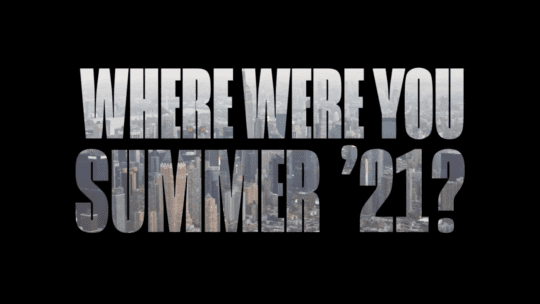
Labor Day signifies a bookend to what usually constitutes a busy summer travel season. This summer started out well, with vaccines in arms and COVID-19 seemingly in retreat. However, the slowing of vaccinations combined with liberating reopenings provided an opportunity for the delta variant to emerge in July, accounting for 80 percent of new cases in the U.S. This is sure to be causing some havoc for communicators in the travel and hospitality sectors.
Regardless, Labor Day travel soldiers on. A Travel Pulse poll reported that 20 percent of respondents said they would travel for Labor Day—totaling 51 million people—with those most likely to travel being six-figure earners (32 percent), parents with kids younger than 18 (30 percent) and Gen Xers (25 percent).
However, a survey from Longwoods International anticipates a downturn in travel. Nearly two-thirds of travelers (drawn from a consumer panel of 1,000 adults) now say they are changing their plans because of coronavirus, up from 43 percent two months ago. One in five travelers has postponed trips until later this year, while one in six has put off travel until next year.
“As hopes of the travel industry for straight-line growth back to pre-pandemic levels recedes, it’s more important than ever for destinations to adjust marketing strategies to the fluctuations in traveler sentiment to support a safe and profitable fall travel season,” said Amir Eylon, president and CEO of Longwoods International.
PRNEWS examined communication strategies of several travel organizations to see if/how the downturn translates into a tactical pivot.
Virginia focuses on low-risk travel
At the start of the pandemic in March 2020, the Virginia Tourism Corporation unveiled WanderLove, a campaign highlighting road trips, hidden gems, outdoor recreation and other safe vacation experiences. And while things have changed, this campaign is sure to endure.
“Knowing there was concern with the safety of travel, we focused on five thematic pillars that highlighted low-risk travel experiences in Virginia: scenic drives, outdoor experiences, small towns, hidden gems and LOVEworks, a collection of 275 colorful, Instagram-able, roadside “LOVE” signs,” said Andrew Cothern, communications manager at Virginia Tourism Corporation. “These five pillars not only captured the unique aspects of a Virginia road-trip, but also promoted low-risk experiences that travelers could enjoy from their car or socially distanced from large crowds.”
Cothern says the group chose this strategy after researching its audience.
“We did research surveys [and used others] from the tourism industry [about] travel sentiment early on into the pandemic and based our marketing strategies from there.”
And the work paid off. Cothern said because the “health and safety of residents and visitors is [the] top priority, Virginia will continue the WanderLove campaign through the fall and promote low-risk travel experiences as it continues to keep an eye on delta variant cases.”
NYC capitalizes on safe policies, adjusts messaging
New York City, a COVID epicenter in the pandemic's early stages, now has some of the strictest rules regarding vaccinations and reopening. As of Sept. 13, NYC will require proof of one dose of a vaccination for activities, including indoor dining, gyms and performances. For travelers seeking a more stable, peace-of-mind visiting experience, the Big Apple may just be the destination.
NYC & Company, the city's official tourism organization, certainly dealt with ups and downs this year as one of the largest visitor destinations in the world. In the spring it launched the communication campaign “NYC Reawakens,” announcing the Apple's reopening. A virtual press conference featured highlights of new hotels, restaurants and experiences showcasing the energy, vibrancy and excitement of the city.
And as summer began NYC & Company launched a $30 million tourism campaign called “It’s Time for New York City,” designed to create urgency and FOMO (Fear of Missing Out) amongst travelers. The effort reminded potential visitors of NY's unrivaled resiliency.
Christopher Heywood, EVP, global communications at NYC & Company, acknowledges that the summer hasn’t been without challenges. Yet he remains “cautiously optimistic” about the future.
“After we launched the comms campaign and the marketing campaign, things were moving forward until late July, when we heard of the Delta variant disrupting things more than we may have anticipated,” Heywood says. “At that moment, we had to soften our messaging a bit—being not overly bullish and more cautious...but, at the same time, we continued to promote summer travel. We ran our longest summer restaurant week ever, for five weeks!”
Heywood says as NYC introduced new restrictions, including proof of vaccination, the organization pivoted to make sure information got out to not only tourists, but corporate partners. In addition, it positioned COVID regulations as a positive.
“NYC is a safe bet—and we believe the vaccine requirements ensure that consumers will view our destination as a good choice.”
Heywood says the group will continue to monitor the situation, but also highlight pivotal milestones relating to the city’s reopening—the U.S. Open, Broadway, Fashion Week, New York Marathon–as well as engage with domestic and international travel writers. International travel accounts for a lucrative segment of the business—up to 20 percent of volume, but 50 percent of spending in any given year. Recovery is crucial.
“One thing I could recommend to other travel communicators: be nimble, anticipate this recovery to not be a straight line, and continue to communicate with your stakeholders and various audiences in real time (including consumers).”
Nicole Schuman is senior editor for PRNEWS. Follow her @buffalogal
